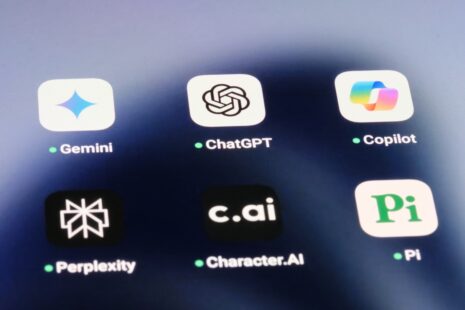Starting with AI can be an exciting but overwhelming journey, especially with the vast number of tools, technologies, and applications available.
A step-by-step guide on where to start with AI…
Understand What AI Is
-
Basic Knowledge – Start by understanding what AI is and its key concepts. AI is a broad field that includes machine learning (ML), natural language processing (NLP), robotics, and computer vision.
-
Resources – Read articles, watch introductory videos, or take beginner courses on platforms like Coursera, edX, or Udacity. Books like “Artificial Intelligence: A Guide for Thinking Humans” by Melanie Mitchell are also great for understanding the basics of AI.
Determine Your Goal
-
Identify Use Cases – Before diving deep, think about why you want to learn AI. Are you interested in using AI for business purposes, building AI applications, or learning more about AI for personal development?
-
Practical Applications – AI can be applied in many fields, like healthcare, finance, marketing, and automation. Pinpoint the area you’re most interested in so you can tailor your learning accordingly.
Learn the Fundamentals of Programming
-
Start with Python – Python is the most popular language for AI because of its simplicity and extensive libraries like TensorFlow, Keras, and PyTorch. If you’re not familiar with programming, start learning Python basics.
-
Resources – Platforms like Codecademy, freeCodeCamp, and Python.org offer great resources for learning Python.
Familiarize Yourself with Mathematics and Statistics
-
Key Concepts – Understanding concepts like linear algebra, calculus, probability, and statistics is necessary to grasp AI and machine learning algorithms.
-
Learning Resources – Websites like Khan Academy and YouTube channels like 3Blue1Brown offer excellent math tutorials. You don’t need to be a math expert, but a foundational understanding helps.
Dive into Machine Learning (ML)
-
Start with ML Basics – Once you have a good grasp of Python and math, begin learning the fundamentals of machine learning. Start with supervised learning, unsupervised learning, and reinforcement learning.
-
Courses to Consider
-
Andrew Ng’s Machine Learning Course on Coursera – A great starting point for understanding ML algorithms.
-
Fast.ai’s Practical Deep Learning for Coders – Learn practical AI applications, especially deep learning, by building real projects.
-
Start with the basics of AI by learning programming, machine learning, and the foundational math concepts. Once you have a strong grasp of these areas, dive deeper into more specialized AI topics. Keep practicing with hands-on projects and real-world applications to solidify your skills.




